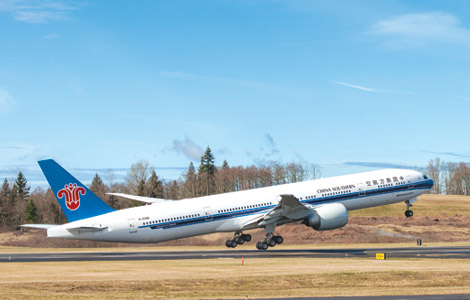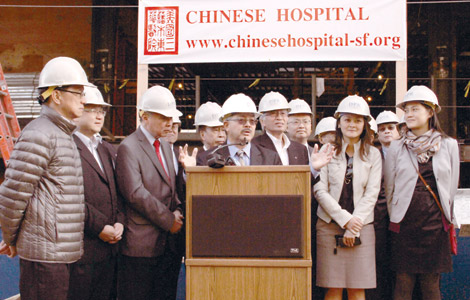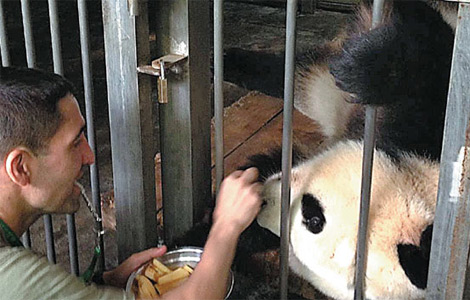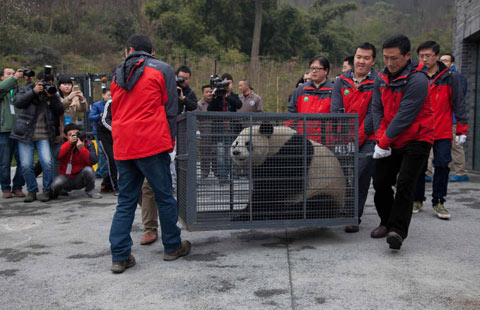Peru Las Bambas copper mine in play
Updated: 2014-02-17 06:11
(China Daily Latin America)
|
||||||||
Four months since Minmetals Corp's initial bidding on Glencore-Xstrata's $5.2 billion Las Bambas copper mine in Peru, the deal is close to being final, according to people familiar with the matter, reports said.
A deal between a Chinese consortium led by Minmetals, China's biggest metals trader, and Glencore-Xstrata, a Baar, Switzerland-based commodities producer and marketer, could be announced as early as this month, subject to the Chinese government's approval, according to an unnamed source quoted in a Bloomberg report.
The buyer group also includes Citic Metal, a unit of the investment giant Citic Group Corp, and China Reform Holding Corp, an investment company backed by China's State-owned Assets Supervision and Administration Commission (SASAC). Both firms joined the bidding soon after Minmetals announced its run for the mine.
Glencore-Xstrata is selling Las Bambas as part of an agreement to gain China's nod on a merger of its own last year. The global nature of the tie-up between commodities trader Glencore and mining firm Xstrata, which will potentially control 7 percent of the global copper supply, made China one of the countries from which antitrust lawyers needed authorization.
Xstrata started the Las Bambas copper mine project in 2010 with an expected cost of $5.2 million. Located 45 miles southwest of the city of Cusco, the mine is scheduled to start operation in 2015 with 400,000 tons annual production of copper for at least the first five of its 18 years of estimated life, according to its official website.
Although the website did not reveal the total estimated reserve of Las Bambas, a Reuters report quoted the company saying the mine contained 6.9 million tons of copper, which raised speculations over whether Glencore-Xstrata intends to keep the mine.
"Interestingly they have reported the reserves of Las Bambas, which might imply that they are preparing to keep it," said Investec analyst Marc Elliott in the Reuters report.
The thinking behind it is that Ivan Glasenberg, chief executive of Glencore, and his copper chief, Telis Mistakidis, now suspect there is more to Las Bambas than previously estimated by Xstrata. According to a Financial Times article, Glencore engineers think it is possible to operate the mine more cheaply and effectively than the current plan.
Glencore-Xstrata's traders also projected a rising trend for copper prices in the next few years, making it 30 to 40 percent more likely the company will keep the mine, said an unnamed close source of the deal quoted in the report.
However, according to the agreement made with Chinese authorities previously, the Swiss company has to sell if the buyers' offer is better than investment banks' valuation, which could increase under a new development plan with a higher reserve price.
Huang Hongxiang, initiator of China-South Dialogue who is experienced in Chinese enterprises' operations in South America, sees beyond the numbers of the deal.
"Peru is one of South America's most important mining producers, it is inevitable for Minmetals to enter the market sooner or later," Huang told China Daily.
However, based on the experience of Shougang Group, the Chinese state-owned steel giant, and Chinalco, state-owned aluminum producer, what lies ahead in Peru for Minmetals could be challenging.
Shougang bought Marcona Mine from the Peruvian government in 1992, but has since suffered ongoing conflicts with local communities and unions, according to Huang, who went to Peru in 2013 to research on the matter.
Chinalco, learning from its forerunner, has poured millions of dollars into community building in order to earn a positive image in Peru. But it is still struggling trying to relocate a town of 5,000 people for a new mine, which has drawn continuous protests.
"Through interviewing local government officials, industry leaders and academics, I have come to find that Chinese enterprises have encountered numerous problems such as lack of the capability for intercultural communication and integrating with the local society," Huang said.
"But if (Minmetals can) learn from Shougang and Chinalco's experiences in Peru, overcome certain weakness of state-owned enterprises, recruit proper international talents, it might become an interesting case for Chinese mining companies' development overseas," he said.
Zhang Yang contributed to this report and can be reached at yangzhang@chinadailyusa.com
Most Viewed
Editor's Picks

|

|

|

|

|

|
Today's Top News
US space telescope spots 715 more planets
Bags banned in Boston Marathon
Asiana fined $500,000 over SF crash
TPP talks in final stretch
Spotlight on Chinese publishing
Weibo faces modest growth in '14
Services top US firms' revenue
US planning full Afghan pullout
US Weekly

|

|













